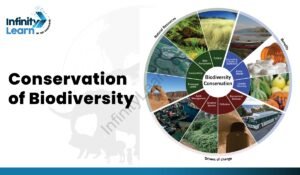Biodiversity, the intricate web of life that includes all species, ecosystems, and genetic diversity, is the foundation of a healthy and resilient planet. It provides essential ecosystem services such as clean air, water, food, and medicine, all of which are crucial for human survival. However, biodiversity is under unprecedented threat from human activities like habitat destruction, climate change, and pollution. As the global environmental crisis deepens, the need for effective biodiversity conservation strategies has never been more critical. Understanding these strategies and their implementation is key to preserving the planet’s natural heritage for future generations.
Understanding Biodiversity Conservation
- What is Biodiversity?
Biodiversity refers to the variety of life on Earth, encompassing different species, ecosystems, and genetic variations within species. It plays a critical role in maintaining the balance of ecosystems, providing essential services like clean air, water, and food, and contributing to human well-being. - The Importance of Biodiversity
Biodiversity is vital for the stability and resilience of ecosystems. It ensures that ecosystems can recover from disturbances, adapt to changes, and continue to provide the resources and services necessary for life. A diverse ecosystem is more robust and better able to withstand environmental stresses such as climate change.
Key Threats to Biodiversity
- Habitat Destruction
The most significant threat to biodiversity is habitat loss, driven by deforestation, urbanization, and agricultural expansion. When habitats are destroyed or fragmented, species lose their homes and resources, leading to a decline in population and, ultimately, extinction. - Climate Change
Climate change alters temperature, precipitation patterns, and sea levels, directly impacting species’ survival. Many species cannot adapt quickly enough to these changes, leading to shifts in their distribution, behavior, and reproductive patterns. - Pollution
Pollution, including plastic waste, pesticides, and industrial emissions, contaminates ecosystems, harming both wildlife and plants. It disrupts food chains, contaminates water sources, and leads to health issues in both animals and humans.
Global Biodiversity Conservation Efforts
- International Treaties and Agreements
Global efforts to conserve biodiversity include treaties like the Convention on Biological Diversity (CBD) and the Convention on International Trade in Endangered Species (CITES). These agreements aim to promote sustainable use, protect endangered species, and foster international cooperation. - Protected Areas and Reserves
Establishing protected areas, such as national parks, wildlife reserves, and marine sanctuaries, is a cornerstone of biodiversity conservation. These areas provide safe havens for species, allowing them to thrive without human interference.

Conservation Strategies for Different Ecosystems
- Forest Conservation
Forests are home to a significant portion of the world’s biodiversity. Strategies for forest conservation include sustainable logging practices, reforestation efforts, and protecting old-growth forests from deforestation. - Marine Conservation
Marine ecosystems are equally important and face threats from overfishing, pollution, and climate change. Marine conservation strategies include establishing marine protected areas (MPAs), regulating fishing practices, and restoring coral reefs. - Wetland Conservation
Wetlands are crucial for water purification, flood control, and supporting diverse species. Conservation strategies focus on protecting existing wetlands, restoring degraded ones, and managing water resources sustainably.
Community Involvement in Biodiversity Conservation
- Indigenous Knowledge and Practices
Indigenous communities possess invaluable knowledge about local ecosystems and species. Integrating this knowledge into conservation strategies can enhance their effectiveness and ensure cultural preservation. - Community-Based Conservation
Empowering local communities to take part in conservation efforts leads to better outcomes. Community-led initiatives, such as community forests and locally managed marine areas, have proven successful in preserving biodiversity.
Challenges and Future Directions
- Balancing Conservation with Development
One of the primary challenges in biodiversity conservation is balancing the need for economic development with the protection of natural resources. Sustainable development practices that integrate conservation into economic planning are essential. - The Role of Technology
Technological advancements, such as satellite monitoring, genetic research, and big data analysis, are transforming biodiversity conservation. These tools provide valuable insights, enabling more targeted and effective conservation efforts. - Future of Biodiversity Conservation
The future of biodiversity conservation lies in international cooperation, innovative approaches, and public awareness. As the global population grows and environmental pressures increase, the need for effective conservation strategies becomes even more urgent.
Conclusion
Protected areas are indispensable in the fight to preserve biodiversity. They provide safe havens for species, conserve genetic diversity, and buffer against the impacts of human activities. Despite the challenges in managing these areas, their role in safeguarding our planet’s natural heritage is undeniable. By continuing to support and expand protected areas, we can help ensure that biodiversity thrives for generations to come.
